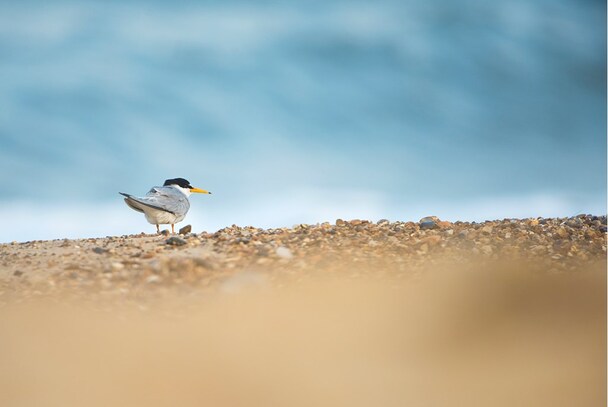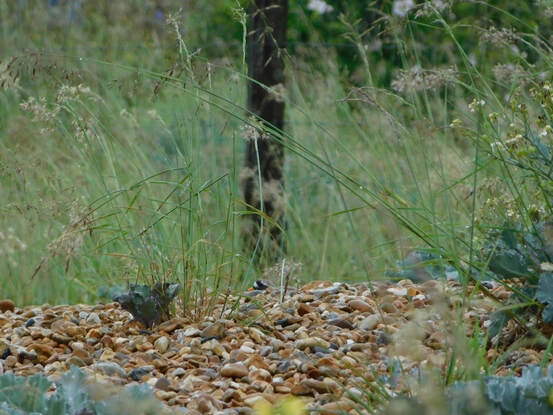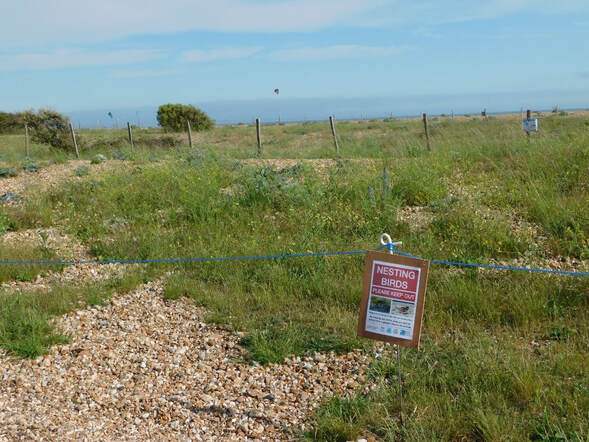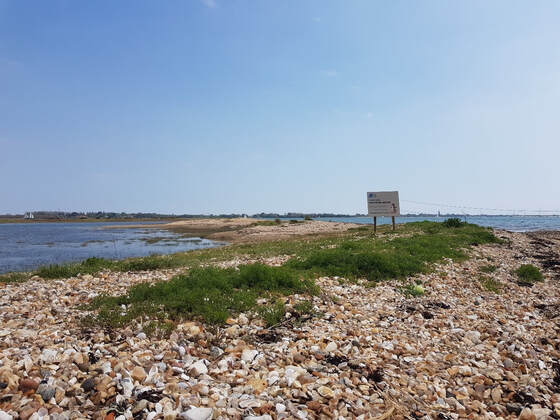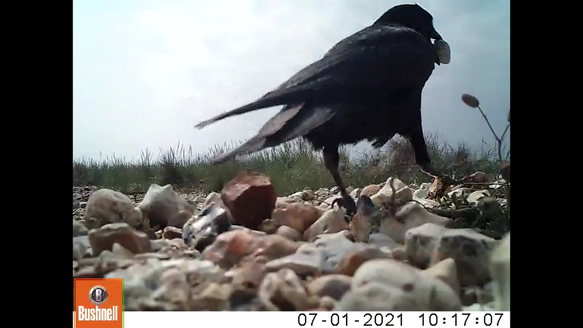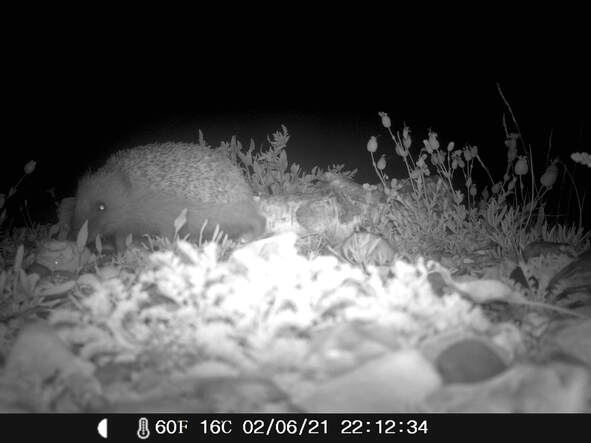|
Blog by Sophie Yeomanson, RSPB Community Shorebird Officer In the Solent, beach nesting birds are faced with many threats, from increasing visitor pressure, to loss of suitable habitat for nesting. Every year, colonies of Little, Common and Sandwich Tern migrate to the Solent from Africa to nest on our shingle beaches, alongside Ringed Plover, Oystercatcher, Black-headed and Mediterranean gulls. My name is Sophie and here is some insight into the work I have been doing for the past three months as a Shorebird Officer for LIFE on the Edge in the Solent. Initial Monitoring Monitoring the threats to breeding birds on a site is important, as this will inform management practises to mitigate against them. Much of the work we have been doing in the Solent over the past few months has involved watching nests, recording disturbances, and monitoring how the nesting birds have been reacting to these disturbance events. Discovering how the beach is used by people and other wildlife is an important first step to finding ways to protect the nesting birds. Different species react differently to threats, for example, we have seen ringed plovers performing a broken wing act when they think their nest may be under threat from an inquisitive dog, intending to lead the perceived predator away from the young before flying off. Other species will mob the threat, an example of this being oystercatchers noisily attacking drones flying overhead, whilst leaving their nests exposed to the elements. Practical measures can be taken to prevent this from happening, such as installing temporary fencing to cordon off areas on the beach and installing signs facing out towards the sea so that people approaching from the water know where to avoid when landing. So far in the Solent, temporary fencing has been installed across three different sites for the first time, giving refuge to multiple families of little tern, ringed plover, and oystercatcher. Trail cameras are also extremely useful tools for helping us to monitor nests. The cameras collect snapshot footage of a fixed location over time, using motion detectors and timers. These have allowed us to monitor the nesting sites without being present 24 hours a day, so we can see what happens when we aren’t looking and plan protection measures for the future. Across the Solent beach nesting bird sites, we have been locating ringed plover and oystercatcher nests and setting up trail cameras to monitor them. Footage from this year has revealed that egg predation (by carrion crows and hedgehogs) has been a cause of nesting failure at one site, where nesting success had not previously been monitored in depth. Because of these findings, decisions can be made about how our team can safeguard nests for the next breeding season to hopefully allow the nests to progress past the incubation stage. Our Excellent Volunteers Engaging with members of the public is another vital part of our work in the Solent to make space for birds to nest. Whilst practical measures to protect nests, such as temporary fenced off areas, work to protect the birds within them, birds can’t read the signs and don’t always choose to nest in the areas we create for them. That’s where community engagement comes in! Our wonderful new team of beach nesting bird volunteers have been doing an excellent job talking to beach visitors around the Solent about the species we share our shores with, and promoting the small changes they can do that will make a big difference to the success nesting birds. Having a daily volunteer presence on the sites has proved to be really important, and visitors have thoroughly enjoyed learning about the birds, often astonished by the images presented to them of eggs laid in shingle scrapes or of tiny camouflaged chicks on the beach. For many of the visitors, conversations with the team are the first they’ve heard of a ringed plover or little tern, let alone seen one on the beach. Raising awareness of these “invisible” species through community engagement will be pivotal in helping these birds to thrive in the future. 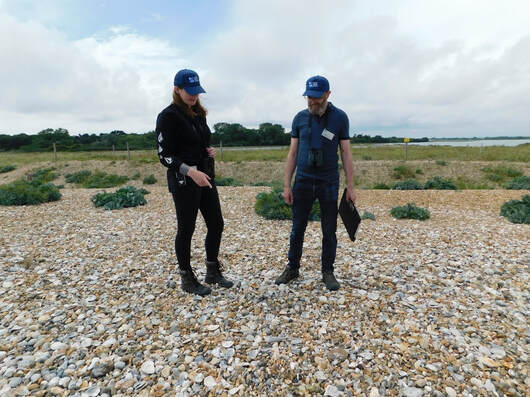 Our Beach Nesting Bird volunteers at RSPB Pagham Harbour discussing the challenges shorebirds face and why it is important for visitors to give them space. Here, they have been using a model Little Tern and photos of nests to help show how vulnerable to disturbance beach nesting birds can be. Photo Credit: Sophie Yeomanson How can you help? We are looking to expand this team across the wider Solent area in time for the next breeding season to help safeguard other nesting sites and provide a joined-up network of safe spaces for seabirds and beach nesting waders. Find out how to get involved here: https://www.rspb.org.uk/get-involved/volunteering-fundraising/volunteer/ Or you can enquire through the LIFE on the Edge website: https://www.projectlote.life/
0 Comments
Leave a Reply. |
Archives
April 2024
Categories
All
Photo credits: Oystercatcher by Katie Nethercoat (rspb-images.com)
LOTE Logo credits: Saskia Wischnewski |

